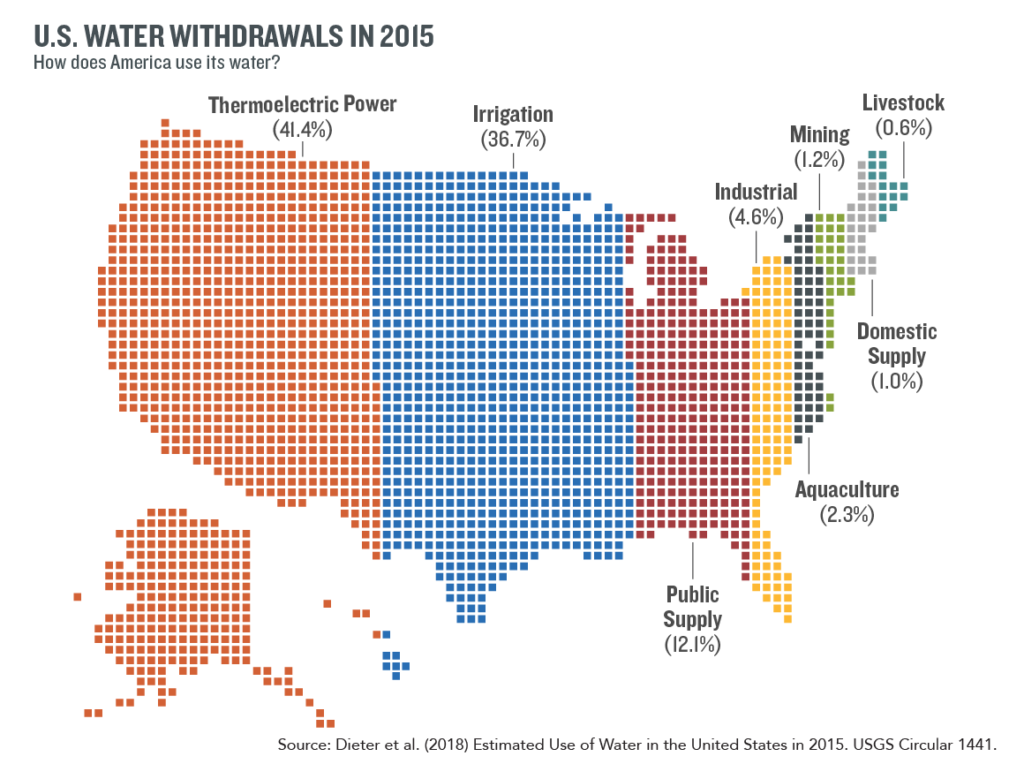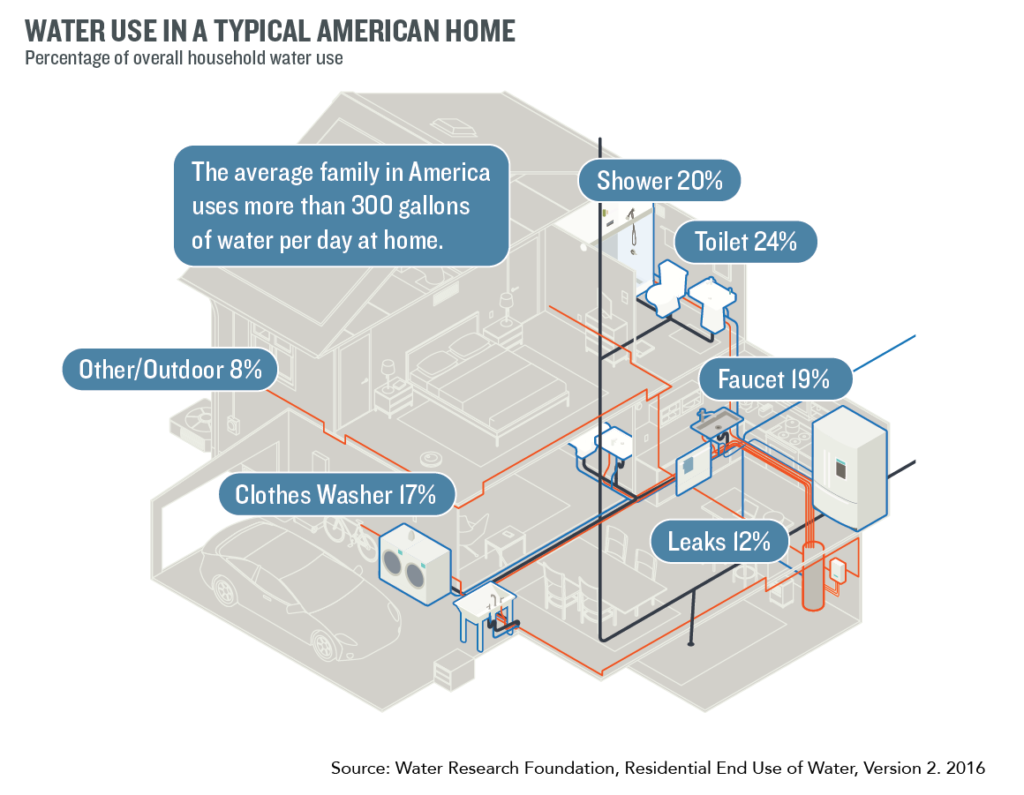Overusing water is a growing concern in the United States communities across the country. It is a global risk, as well.
Though our planet might seem like it has plenty of water, the fact is less than 1 percent is available for human use. The availability of water is altering due to irrigation, urban development, climate change, and many other factors.
Therefore, it’s important to understand how we use water on a daily basis and where there are opportunities for using it more wisely.

Overusing Water
The U.S. Geological Survey (USGS) presented a new report, which gives us some insight on how we are overusing water and the way we withdraw water across the country.
The report includes a few surprises. For example, Arkansas is the 33rd most-populous state. It withdraws the fifth most water, mainly for crop irrigation. And Idaho withdraws the most water nationwide for aquaculture.
Moreover, power plants are the largest users of water in the country. According to the USGS, the U.S. used 322 billion gallons of water per day in 2015. On a typical day in the U.S., we withdraw enough water to fill 1,163 Empire State Buildings.

Overusing water and water use isn’t directly related to population. New York…the fourth most populated state in the country with nearly 20 million people… isn’t on the list of water withdrawal from the top states.
The top five states overall for water withdrawals are California (9 percent), Texas (7 percent), Idaho (6 percent), Florida (5 percent) and Arkansas (4 percent).
Population and Consumption
Overusing water can come from various sources. Forinstance, public supply refers to water that is used for domestic purposes — such as bathing, wash ng clothes and dishes, cooking, drinking, watering lawns, etc..
In addition, public services such as pools, wastewater treatment, and firefighting fall under the category of public supply. Irrigation withdrawals are another area where overusing water can take place.
According to the USGS, 63.5 million acres (25.7 million hectares) of land were irrigated in 2015, a 2 percent increase over 2010. Overusing water for power generation are most dominant in the southern and eastern parts of the U.S., with New York, Michigan, Florida, Texas, and Illinois leading the way. Surface water withdrawals account for nearly all of the water used in this category.
Most water withdrawn by power plants is returned directly to the source after being used to cool the steam that drives thermoelectric generators.
Industry is another source of how overusing water can take place. Louisiana and Indiana are the two dominant states for industrial water withdrawals. Together they account for 30 percent of industrial use nationwide.
In northwestern Indiana, these withdrawals are largely for steel production, whereas Louisiana uses large quantities of water for the chemical and petroleum industries in the southeast portion of the state.

Water Usage at Home
Overusing water at home adds to the depletion of our water resources. According to the U.S. Environmental Protection Agency (EPA), the average U.S. household uses more than 300 gallons of water per day. In a typical residential dwelling, 70 percent of this usage occurs indoors…primarily in the bathroom.
We need to prepare and think about ways to be strategic about how we use our water resources. Not only conserving water, but also segmenting water into different categories and diverting each to the most appropriate use.
Our water supply will always remain constant, while population and demand on freshwater resources are increasing.
And although it’s true that the water cycle continuously returns water to Earth, it is not always returned to the same place, or in the same quantity and quality.

An easy to way to understand individual water use is to look at your water bill…not just the amount due, but how much water you used.
Once you understand how much you use, the EPAs WaterSense calculator can help determine how much water your household could save if you switched to more efficient, WaterSense labeled products and limit your probability of overusing water.
The U.S. Geological Survey (USGS) new report is at their website.